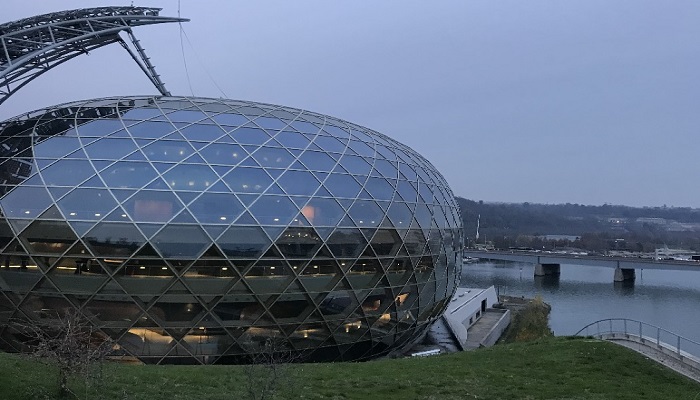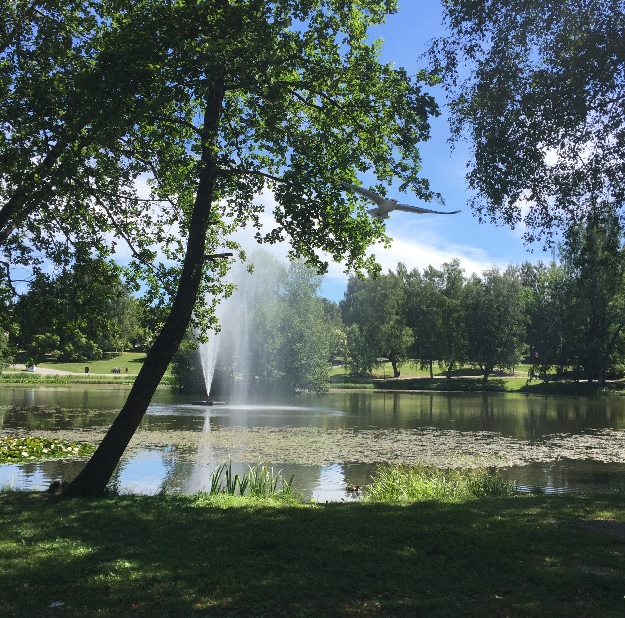
Nature-based Solutions are on everyone’s lips in the view of their risk reduction potential but also their social, economic, and environmental side effects (so-called co-benefits). But how significant are these co-benefits?
What are NBS?
Nature-based Solutions (or in short NBS) are an umbrella term for ecosystem-based solutions to counteract societal challenges such as climate change, disaster, biodiversity, and more [1]. These solutions are more and more favoured over so-called grey (engineering) solutions or complementing these with their entailing co-benefits.
A large variety of NBS measures are increasingly used to mitigate or reduce hydrological-meteorological risks:
- measures such as riparian buffers and wetlands store water during peak flows and further improve water quality by trapping nutrients and sediments;
- urban sustainable drainage measures (e.g., ponds, parks, and green roofs) infiltrate and store rainfall; or
- cover crops and agroforestry anticipate soil erosion and impacts of drought.
Need for quantifying co-benefits of NBS
NBS are often advertised along with their co-benefits, but the question remains of how significant these are. For instance, riparian forests are known for the co-benefit of providing habitat and increasing biodiversity. The fact is that an increase in biodiversity is largely depending on the design of the new riparian zone [2]. Buffer zones need to be of specific widths to establish a habitat. A minimum buffer width of 500 meters is recommended i.e., to establish habitats for larger mammals [3].
In order to gain a better understanding on the contribution of co-benefits, it is necessary to quantify their impact [4]. In some cases, co-benefits are ranked by their impact between low and high [5] but more commonly they are simply listed (e.g. in form of matrices) along with the NBS without any quantitative or qualitative reference [6,7].
However, to understand the potential impact of an NBS before implementing it, it is necessary to also pre-assess co-benefits not only direct benefits. This type of pre-assessment can further be used for the development of i.e., environmental impact assessments for NBS project proposals.
Co-benefits can be quantified by using existing tools and models. For instance, the i-tree tool [8] can be applied to calculate potential carbon storage or air pollution removal, or the INVEST-tool [9] can calculate nutrient retention by vegetation and, therefore, indicate potential water quality.
With colleagues, we summarised tools and models from other research fields that can be used for quantifying commonly reported co-benefits [see reference #4].
Co-benefits are interlinked
Co-benefits are greatly interlinked and can increase or decrease each other. Let’s take the example of a newly built urban park which opens a recreational area. The planted trees are reducing air and noise pollution and even lower temperatures. These co-benefits increase the attractiveness of the area and, therefore, also the property prices which in turn can benefit the local tax revenue.
What about disbenefits?
NBS can also evoke so-called disbenefits or disservices (negative side effects) too, which need to be acknowledged, but are, so far, greatly neglected and unexplored. Examples of disbenefits are:
- potential social exclusion due to higher property prices;
- trees planted too densely building a barrier for pollutants instead of removing them; and
- ecosystem services such as increasing insects (e.g., mosquitos) or pollen causing allergic reactions are often perceived as a negative side effect by people.
Way forward in NBS research and practice
NBS co-benefits are supporting the SDGs, targets of the Paris Agreement and the Convention on Biological Diversity. This trend of NBS is a significant step towards these global frameworks. However, to fully grasp the contribution of NBS, it is necessary to quantify the co-benefits and the disbenefits. Only with the quantification of those it is possible to make evidence-based statements on the impact of NBS on those frameworks [4].
For this aim, further research is needed to strengthen models and tools for the pre-assessment of potential co-benefits. Especially, it is important to make these tools and models more accessible and understandable for planners and practitioner who will design and implement these solutions.
Additional studies are needed to unveil disbenefits to fully integrate them into decision-making and impact assessment. Monitoring of these side effects of existing NBS is already partly being performed, which will help shaping pre-assessment methods but also will provide better knowledge on their interrelationships.
References
- E. Cohen-Shacham, G. Walters, C. Janzen, S. Maginnis, Nature-based solutions to address global societal challenges, IUCN International Union for Conservation of Nature, Gland, Switzerland, 2016. https://doi.org/10.2305/IUCN.CH.2016.13.en.
- K.C. Uggeldahl, S.B. Olsen, Public preferences for co-benefits of riparian buffer strips in Denmark: An economic valuation study, J. Environ. Manage. 239 (2019) 342–351. https://doi.org/10.1016/j.jenvman.2019.03.078.
- Y. Yirigui, S.-W. Lee, A.P. Nejadhashemi, M.R. Herman, J.-W. Lee, Relationships between Riparian Forest Fragmentation and Biological Indicators of Streams, Sustainability. 11 (2019) 2870. https://doi.org/10.3390/su11102870.
- J. Ommer, E. Bucchignani, L.S. Leo, M. Kalas, S. Vranić, S. Debele, P. Kumar, H.L. Cloke, S. Di Sabatino, Quantifying co-benefits and disbenefits of Nature-based Solutions targeting Disaster Risk Reduction, Int. J. Disaster Risk Reduct. 75 (2022) 102966. https://doi.org/https://doi.org/10.1016/j.ijdrr.2022.102966.
- NWRM, Natural Water Retention Measures, (2015). http://nwrm.eu
- L. Wendling, V. Rinta-Hiiro, Performance and Impact Monitoring of Nature-Based Solutions D3.1 Deliverable, 2019. https://unalab.eu/system/files/2020-02/d31-nbs-performance-and-impact-monitoring-report2020-02-17.pdf
- C.M. Raymond, B. Pam, M. Breil, M.R. Nita, N. Kabisch, M. de Bel, V. Enzi, N. Frantzeskaki, D. Geneletti, M. Cardinaletti, L. Lovinger, C. Basnou, A. Monteiro, H. Robrecht, G. Sgrigna, L. Munari, C. Calfapietra, An Impact Evaluation Framework to Support Planning and Evaluation of Nature-based Solutions Projects, 2017. https://doi.org/10.13140/RG.2.2.18682.08643
- USDA Forest Service, Davey Tree Expert Company, The Arbor Day Foundation, Society of Municipal Arborists, International Society of Arboriculture, Casey Trees, SUNY College of Environmental Science and Forestry, i-Tree, (2006). https://www.itreetools.org/ (accessed September 21, 2021).
- Natural Capital Project, InVEST, (2018). https://naturalcapitalproject.stanford.edu/software/invest (accessed September 21, 2021).
Edited by Maria-Helena Ramos


